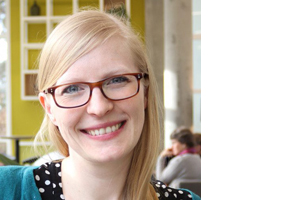About me
How do babies learn to interact successfully with others? How do social interactions early in life shape early development? I am curious about the interplay between cognitive and social processes and their neural underpinnings in early childhood. By studying the brain and behavior of infants and young children, I hope to contribute some answers to these questions.
In my PhD, I investigated joint action development and its distinct neurocognitive processes: planning, controlling and monitoring one’s own actions as well as predicting and monitoring others’ actions. As a postdoc, I continued my research on joint action development while also investigating other social processes such as perspective-taking, learning from others (infant-directed actions) and the development of agency in early infancy.
To investigate early behavior, I make use of eye-tracking and motion-tracking. In addition, I use EEG to get to know more about infants’ and young children’s brain activity. By combining EEG with behavioral measures, I look into the link between brain activity and young children’s behavior.
I am currently an assistant professor in the Baby Research on Action, Interaction and Neurocognition Group together with Prof. Sabine Hunnius. I am further collaborating with colleagues from the Infant Learning and Development Laboratory at the University of Chicago. You can find out more about my research here.
Publications
Meyer, M., Lamers, D.A.M., Kayhan, E., Hunnius, S., & Oostenveld, R. (in press). Enhancing reproducibility in developmental EEG research: BIDS, cluster-based permutation tests, and effect sizes. Developmental Science. [data]
Meyer, M., Chung, H., Debnath, R., Fox, N., & Woodward, A. L. (2022). Social context shapes neural processing of others’ actions in 9-month-old infants. Journal of Experimental Child Psychology, 213, 105260. [pdf]
Meyer, M., van Schaik, J. E., Poli, F., & Hunnius, S. (2021). How infant-directed actions enhance infants’ attention, learning, and exploration: Evidence from EEG and computational modeling.
[pdf] [code]





